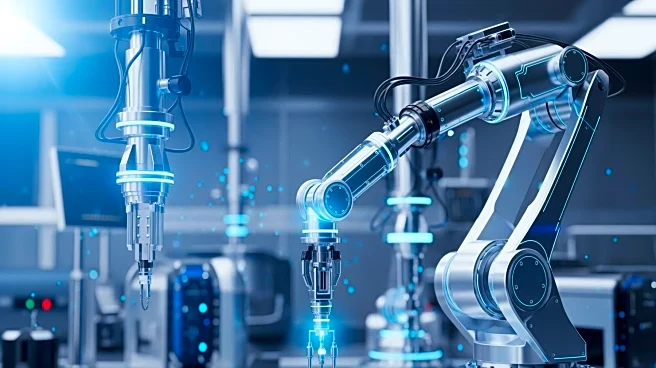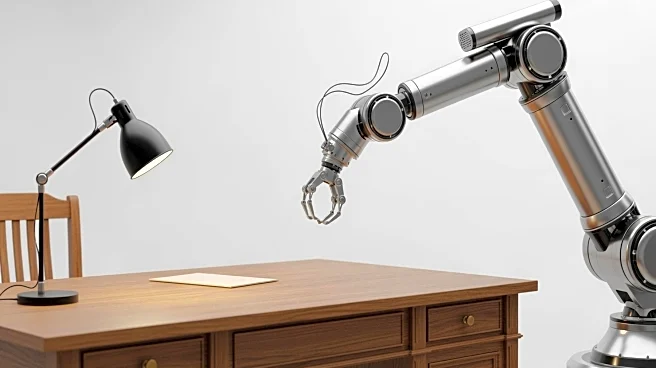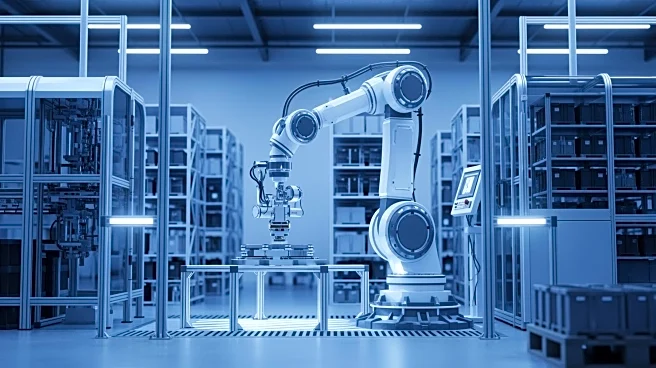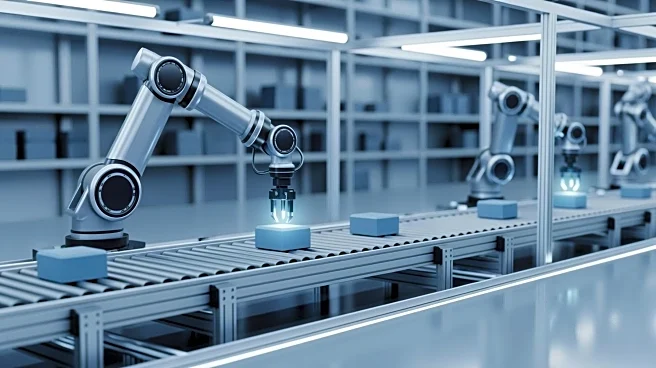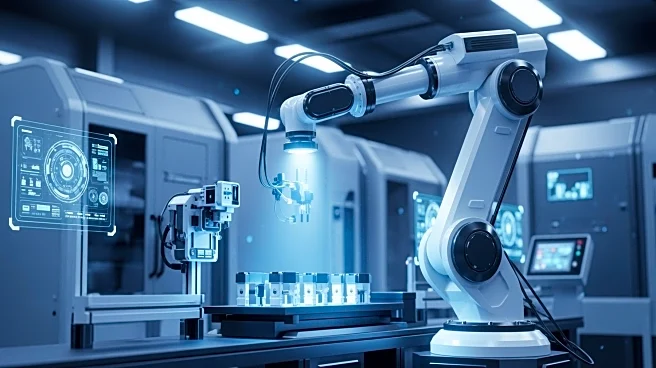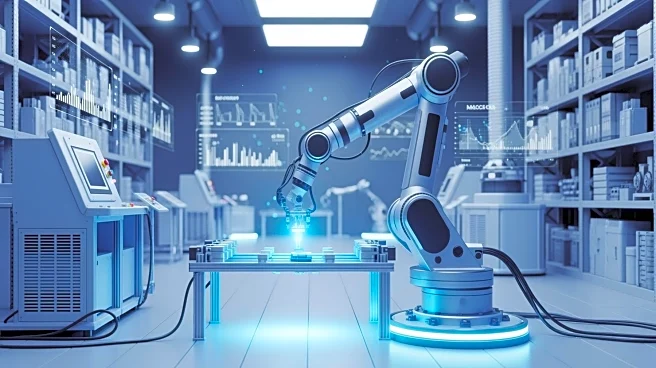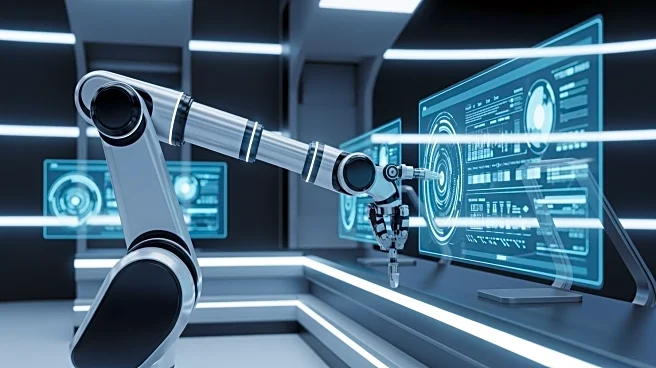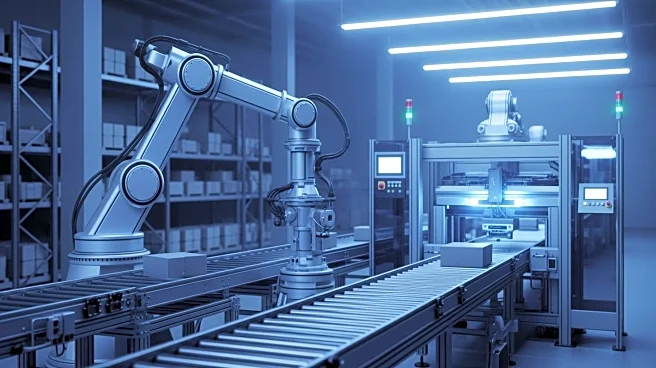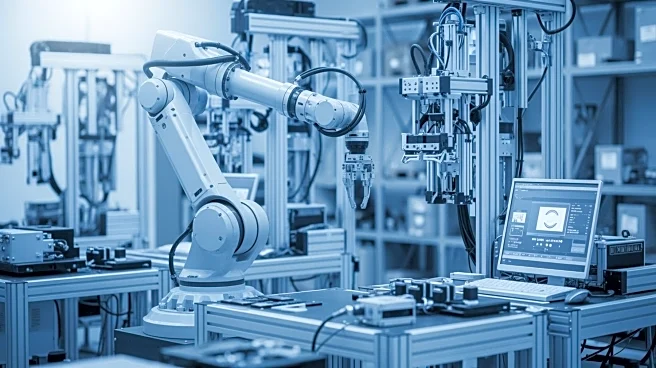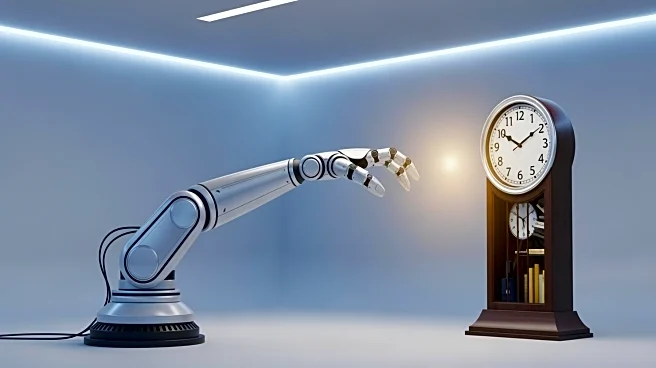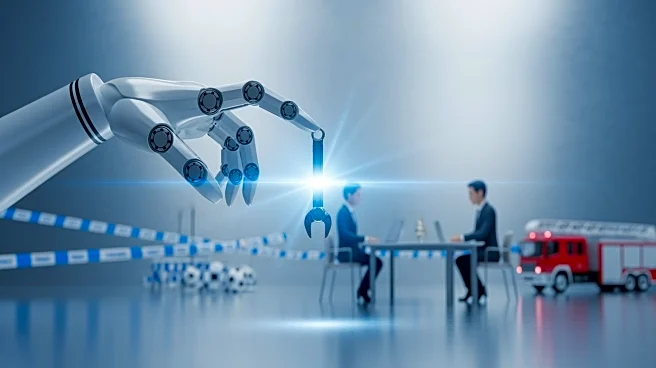What's Happening?
Amazon has unveiled a new robotic system, Blue Jay, designed to enhance efficiency in its operations by assisting employees with tasks involving reaching and lifting. This system integrates multiple robotic arms
to streamline processes, reducing the need for separate stations. The development of Blue Jay was completed in just over a year, leveraging advancements in AI and digital twin technologies. The announcement comes amid rumors of Amazon planning to cut 600,000 jobs, raising concerns about the impact of automation on employment.
Why It's Important?
The introduction of Blue Jay represents a significant step in Amazon's ongoing efforts to automate its operations, potentially increasing efficiency and reducing costs. However, the timing of this announcement, alongside rumors of substantial job cuts, highlights the tension between technological advancement and job security. The move could have far-reaching implications for the labor market, particularly in sectors heavily reliant on manual labor. It also raises questions about the future of work and the role of automation in shaping employment landscapes.
What's Next?
As Amazon continues to integrate robotic systems like Blue Jay, the company may face increased scrutiny from labor groups and policymakers concerned about job displacement. The potential job cuts could lead to discussions about the need for retraining programs and policies to support workers affected by automation. Amazon's actions may also influence other companies considering similar technological investments, potentially accelerating the adoption of automation across industries.
